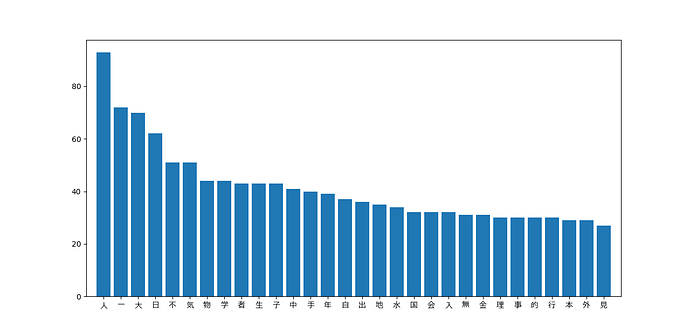Hey! I was very curious to see some data quantified and visualized. For example, I’d love to know the number of times こう is the reading for various characters, compared with every other reading. I’m imagining a bar graph or something with a huge stack of こうs, しょうs, and せいs on the left.
I’d also like to see something like how frequently certain kanji are used, even just limited to the vocab on WK. Like, 気, 人, and 力, for example, get used in a lot of different vocabulary words. Some only have use in a single vocab.
Also, would it be possible to see the most commonly messed up kanji amongst all users? That would also be quite interesting.
3 Likes
mmmh there’s this work here:
I read vargsvans’ great post shortly after I started my WK journey, and I found as I progressed that like them I was having increasing trouble with some of the kanji mnemonics, especially in distinguishing between long and short vowels, so I took vargsvans’ suggestion and read Moonwalking with Einstein.
Armed with the information I learned from that book, I am now in the process of reworking the mnemonics to better suit the way my mind works (I really like consistancy, I really don’t do well wi…
but it’s by mora not by reading. am curious as well. let’s see if someone replies.
1 Like
Wha? I’m confused by this. What about, like, 会社 (かいしゃ) or 神社 (じんじゃ)? I suppose they’re third mora here… but still final, not initial.
EDIT:
EDIT 2:
1 Like
tx for answering your questions. i can’t really help but please have this
for no reason at all…
4 Likes
I can’t really read that but it looks like **** on a wall.
And I think I see the word “smear”. Which is, I suppose, appropriate.
it’s on my fingers too…
it obviously says smeared ink tsssskkkk…
2 Likes
ky117
March 19, 2022, 6:16pm
7
Here is some data on all of the current accepted readings of the wanikani kanji:
こう : 59
7 Likes
There are a few too many different readings for me to plot them all (a lot of kunyomi only appear once or twice anyway), but here’s a graph of the top 30 readings. Most of them are common onyomi readings like こう. I used all readings listed on WK instead of just the accepted answer on the kanji page, as this roughly includes readings taught later in vocab. It might be a slight overestimate of readings taught though, but it should be close enough
Here’s a graph of the top 30 kanji by occurrence in WK vocab. As expected most of them are common low-level kanji that can be used to create compounds like 人 or 不.
We don’t have access to this data regrettably, so that one is impossible without the staff giving us a graph.
7 Likes
Rowena
March 19, 2022, 9:57pm
10
The analysis was for single kanji, while your ‘example’ is for a vocab item of 2 kanji; 社 alone adheres to the finding :
the combos (with little や、ゆ、よ)only occur singly / in first position, never in second…
alone kanji is 社(やしろorしゃ)
Because these were approximations of chinese readings, and those are one syllable long always
system
March 19, 2023, 11:07pm
13
This topic was automatically closed 365 days after the last reply. New replies are no longer allowed.



